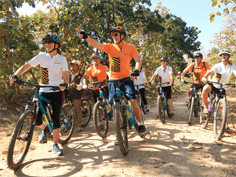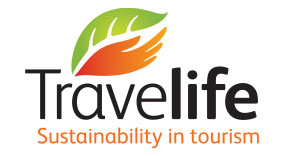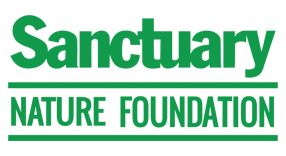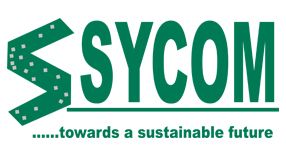Singinawa Jungle Lodge
Kanha National Park
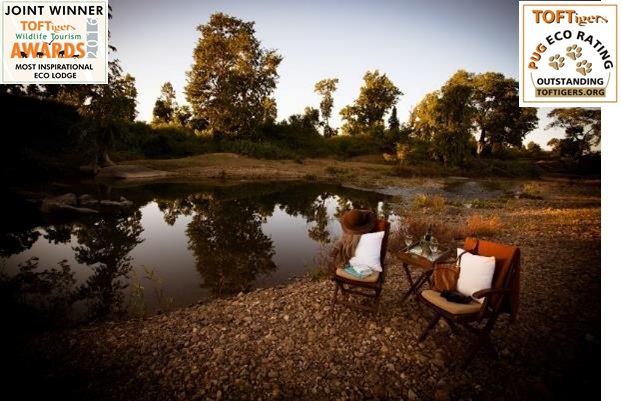
Singinawa Jungle Lodge sits in 110 acres of restored landscape attracting more than 170 different species of birds
Staying true to its name which in Sherpa means Protector of the Sacred Forest, Singinawa Jungle Lodge is helping to conserve Kanha’s ecosystem and promote its vibrant cultural traditions. Under new ownership, its lands have been doubled to 110 acres with close to 30,000 saplings planted under a new restoration drive guided by the lodge’s naturalists. Guests staying in the lodge’s twelve stone cottages can enjoy nature walks in an oasis of undisturbed forest and grasslands with picturesque rocks and watering holes. More than 170 species of birds have been identified in the lodge’s grounds and the butterfly garden is host to a myriad of butterflies and spiders.

Read More
Guests can enjoy picking fresh ingredients from the abundant organic vegetable garden supplying the kitchen, and explore the area on foot, bike or electric buggy, all good for reducing carbon footprint. The Museum, naturalist and staff housing are powered by a 10KVA solar power plant with pathways lit by solar-powered lights. Five groundwater recharging wells have recently been installed to harvest rainwater. A host of other ecological good practice measures are in place from the use of copper bottles instead of plastic, waste segregation, composting and recycling to water conservation measures.
Read Less

The Kanha Museum of Life & Art celebrates the arts of Central India’s tribes and is powered by renewable energy
The Singinawa Conservation Foundation, set up by the lodge, is building an impressive track record of local support complementing the lodge’s ethos of local employment. About 75% of lodge staff come from surrounding villages.

The Foundation provides multi-layered support to local schools. Lodge naturalists participate regularly in children’s outreach to enhance their conservation knowledge and provide research support to the forest department and visiting researchers. Local communities have benefitted from free eye and health check-up camps, solar lamps, gifts of warm clothing and a snake awareness campaign. Women’s empowerment initiatives have seen training and support for a canteen run by women and a personal hygiene awareness camp. Forest department personnel have received solar power for two anti-poaching camps and guides have received free nature guidebooks to enhance their service. Guests are encouraged to donate to initiatives aimed at weaning villagers off firewood and re-greening villages.
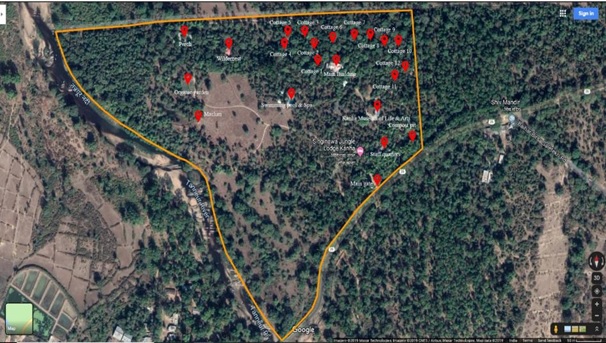
More examples of good practice
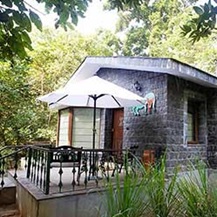
The lodge and stone cottages are built with local materials. Jobs such as painting, polishing, carpentry and masonry are done with local labour.

As much as 52 acres of the 110-acre property has been restored with sal, karonj, bamboo, guava and mango trees planted aplenty Only 10% of the land is used for construction; the majority is left undisturbed.
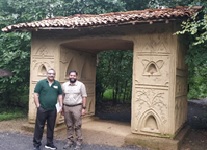
The main entrance constructed by locals is decorated with traditional art.

The lodge is decorated with paintings and murals of local Gond artists.
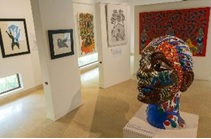
The Kanha Museum of Life & Art provides a further platform for promoting a thriving school of contemporary art which has emerged from the region’s traditional, indigenous culture.
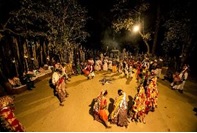
The lodge presents traditional Baiga dance and songs, helping to keep ancient cultural traditions alive.
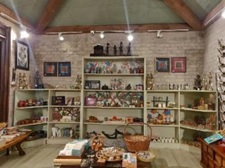
A shop stocks locally made handicrafts such as Gond paintings, Bastar artefacts, local pottery, Baiga jewellery and other handmade items. Local market visits are also encouraged.
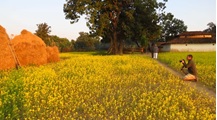
The lodge facilitates visits to the neighbouring village and interactions with local people to promote an understanding of local Baiga culture.
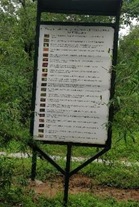
A checklist of butterflies, birds and local flora and fauna to see in and around the property is displayed.
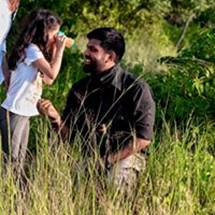
In-house lodge naturalists offer guests a range of educational experiences and contribute to local wildlife intelligence and research.
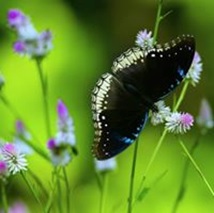
A butterfly garden has attracted a myriad of butterfly, spider and other insect species for guests to explore.
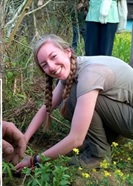
The Lodge works closely with the forest department on its afforestation drives encouraging guests to plant a tree to mark their visit. The replanting drive has covered the lodge grounds and nearby villags of Mukki, Baiga Tola, Samnapur and Kohka.
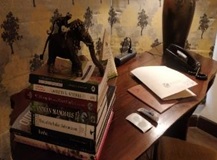
Wildlife literature is available in each cottage. The lodge also has a well-stocked library with books on local flora and fauna.
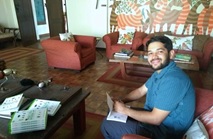
The lodge organises a wider programme of wildlife talks. Examples include a talk by local spider expert Aniruddha Dhamarikar on insects and other arthropods of the Kanha landscape.
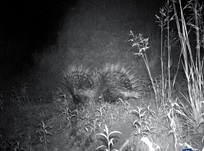
Camera traps are set every night to provide intelligence on wildlife movements in the grounds.
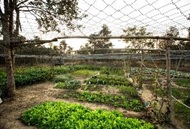
The lodge’s large organic garden takes care of much of its kitchen needs helping to reduce its carbon footprint. Guests are served local cuisine and can enjoy a positive experience picking fresh ingredients and vegetables for their meals.
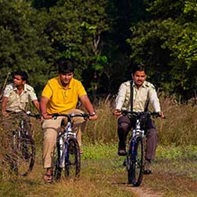
Bicycles are available for guests as a low carbon option. Well-trained naturalists accompany guests on nature and local excursions.
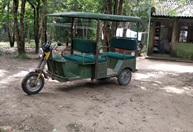
E-buggies are also available.
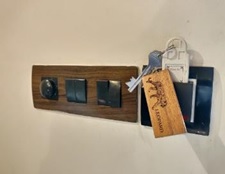
A one key system on-off system is in place to conserve energy. Energy use is regularly monitored. Guest rooms have no television.

Pathways are lit by solar lamps; the museum and staff quarters are powered by a 10KVA solar power plant.

LED or CFL bulbs are used throughout the property.
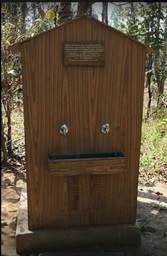
Copper water bottles are provided in every guest room to help eliminate single use plastic. A newly installed water station dispenses reverse osmosis purified drinking water.

Notices are displayed to encourage guests to save energy and water.
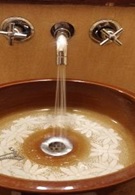
Water saving features include aerated taps and dual-flush toilets.
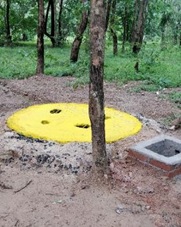
Five new recharge wells have been installed with a depth of 10 ft, diameter 5 ft and capacity of 250 cubic metres per year to harvest rain and recharge groundwater.

A sprinkler method is used for irrigation to save water. Paths are made from natural material to enable water to percolate back into the ground. Extensive planting with indigenous trees and shrubs acts as a natural aquifer and helps to recharge groundwater.
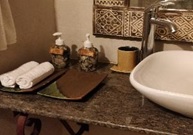
The lodge provides non-polluting, easily degradable herbal toiletries in refillable dispensers to reduce plastic use.
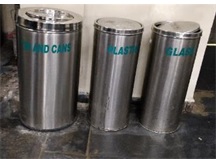
Waste is segregated to facilitate recycling.
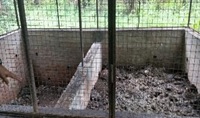
Biodegradable waste is composted for use as manure and properly fenced off to avoid vermin.
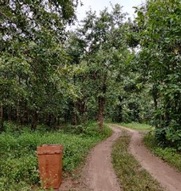
Lodge grounds have bins for rubbish on pathways.
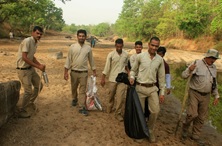
Lodge staff take part in clean-up drives especially along the Tannaur and Banjar river flows to prevent plastic and litter entering waterways.

Signage is displayed to warn guests of hazards.
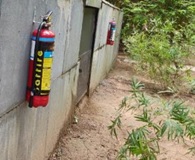
Fire extinguishers are used in appropriate locations such as near the kitchen, LPG storage, staff quarters and cottages.
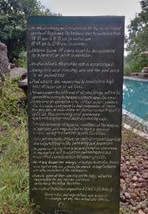
Rules for use are displayed at the swimming pool
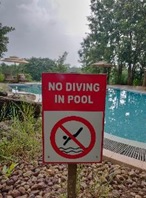
… and appropriate signage to ensure guest safety.
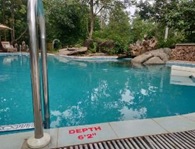
The swimming pool has a water recycling unit.



